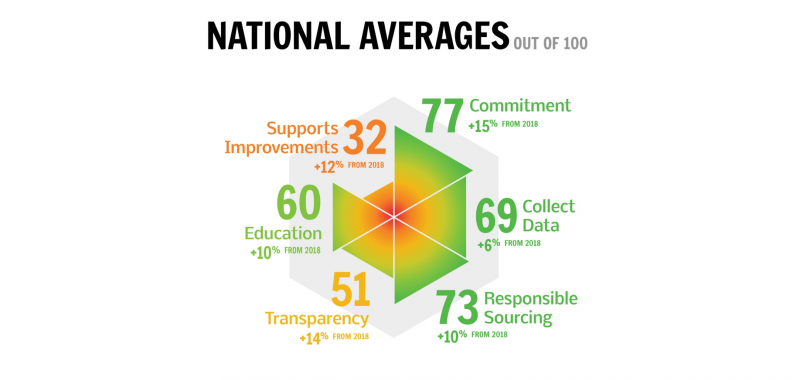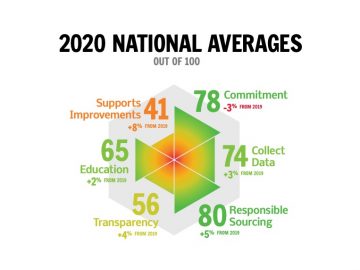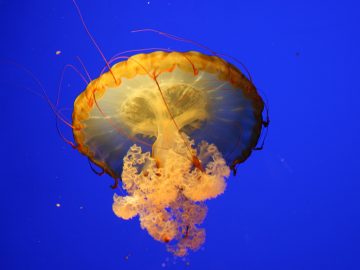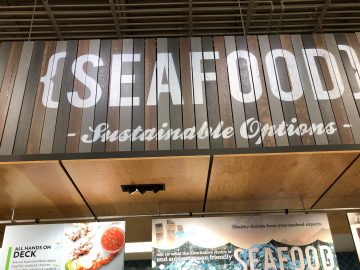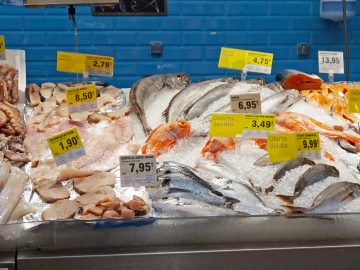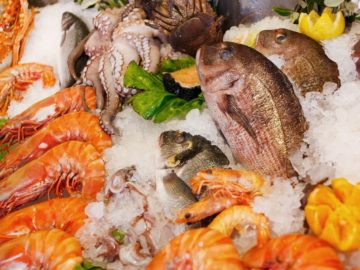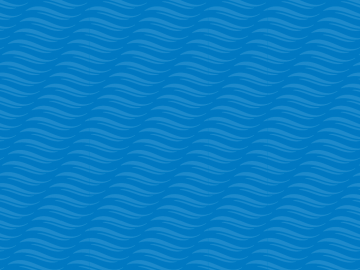A year later, we see retailers have progressed in many ways, but important work remains to ensure retailers flex their purchasing power to contribute to healthier oceans.
Seafood Progress – Canada’s online resource for tracking major food retailers’ sustainable seafood commitments – has just released an update that highlights what has changed in the past year. Seafood Progress assesses the seafood policy and procurement practices for Canada’s nine major food retailers against 21 key performance indicators derived from the Conservation Alliance for Seafood Solutions’ Common Vision for Sustainable Seafood. Seafood consumers can use this tool to see what their retailer is doing to support sustainable seafood and whether it is contributing to change on the water. You can find a short video that walks you through Seafood Progress and how you can use it here.
SeaChoice is pleased to report that the national averages for all Steps increased across the board. This is due to an increase in transparency on what retailers are doing on seafood sustainability and to progressive new initiatives. For example, this year two additional retailers (Sobeys and Safeway) cooperated with SeaChoice to share information about their policies and practices, leading to more complete and representative profiles. There is now only one major food retailer whose profile is based solely on publicly available information. Two other retailers, Walmart Canada and METRO, decided to start publishing information on where their seafood comes from and how it was produced (see Walmart Canada’s Ocean Disclosure Project profile and METRO’s Freshness You Can Trace initiative).
Unfortunately, there are still important areas where progress has been limited. Practices regarding seafood labelling, for example, continue to be barely above the legal minimum requirement – despite one retailer (METRO) showing that other important information such as the species’ scientific name, geographic origin of harvest and harvest method, can be included on seafood packaging in both English and French. Step 6, which looks at what retailers are doing to support improvements of challenging seafood commodities, also continues to lag far behind the other areas – showing that there are lots of opportunities for retailers to increase their impact. It would be great to see all retailers take actions like Save-On-Foods, whose private label shrimp and prawns are entirely produced in ways that are ‘Recommended’ by Ocean Wise and from farms certified by the Aquaculture Stewardship Council.
If you care about sustainable seafood, let your retailer know! Visit Seafood Progress to see how your favourite retailer has scored, then tell them what you like and what you want to see changed. Seafood Progress provides buttons that allow users to tweet a retailer easily. Alternatively, you can contact their customer service department or speak to a representative in store. For more information on the Year 2 results from Seafood Progress, see our short report.
SeaChoice would like to acknowledge the retailer representatives who contributed their time and energy to work with us and share new information so their profiles are as complete and accurate as possible.
This post was followed by a series of articles about the results from each step:
